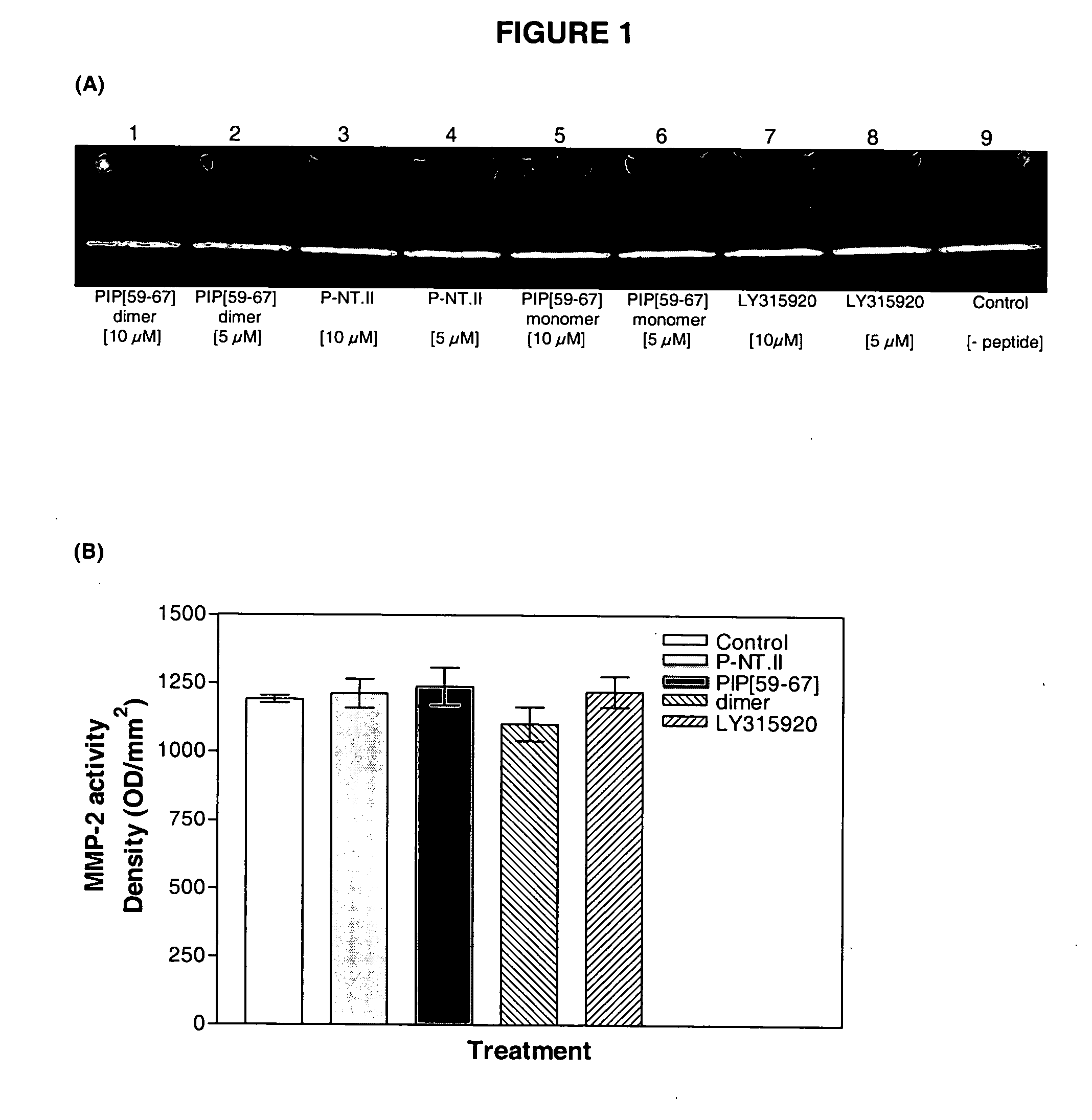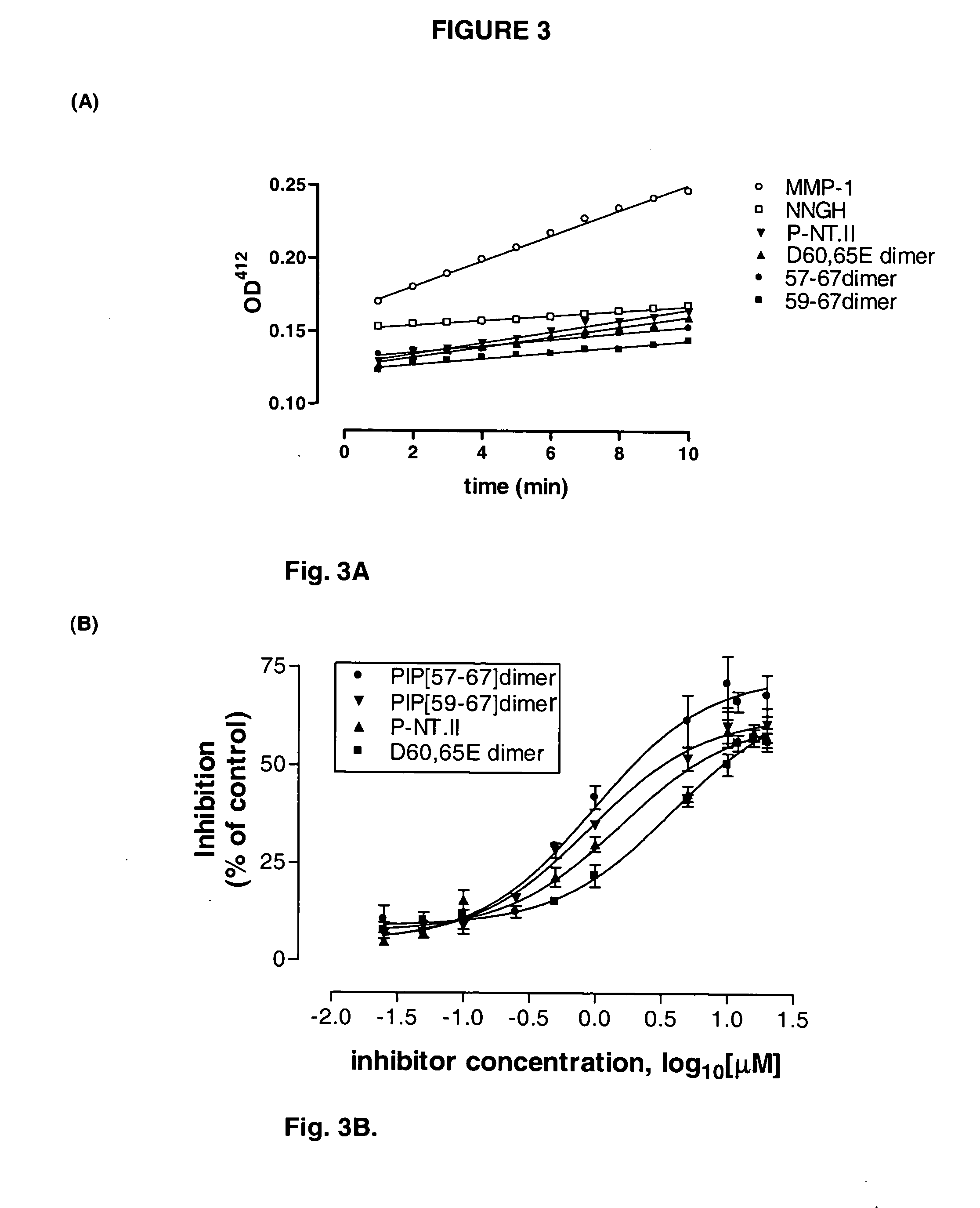Methods and compositions for treatment of arthritis and cancer
- Summary
- Abstract
- Description
- Claims
- Application Information
AI Technical Summary
Benefits of technology
Problems solved by technology
Method used
Image
Examples
examples
[0031] The described features of the invention can be gathered from the following description of preferred embodiments in conjunction with the claims. The inventors have discovered the new peptide analogue with dual inhibitory activity against sPLA2 and MMPs by using the following materials and methods:
Synthesis and Characterization of sPLA2 Inhibitory Peptides
[0032] A family of peptides was synthesized based on the sequence of PIP (Thwin et al. 2000; GenBank Accession Nos. AAF73945, AX175043, CAC43861, CAC43862, CAC43863) using the solid phase method with 9-fluorenylmethoxy carbonyl chemistry. The peptides were purified by successive chromatography with gel filtration and reverse phase high pressure liquid chromatography to more than 95% purity with yields between 10-30%. The sequences were validated by matrix-assisted laser desorption / ionization time-of-flight mass spectrometry (MALDI-TOF-MS).
Determination of PLA2 Inhibitory Activity
[0033] This was carried out as described p...
PUM
| Property | Measurement | Unit |
|---|---|---|
| Volume | aaaaa | aaaaa |
| Volume | aaaaa | aaaaa |
| Volume | aaaaa | aaaaa |
Abstract
Description
Claims
Application Information
 Login to View More
Login to View More - R&D
- Intellectual Property
- Life Sciences
- Materials
- Tech Scout
- Unparalleled Data Quality
- Higher Quality Content
- 60% Fewer Hallucinations
Browse by: Latest US Patents, China's latest patents, Technical Efficacy Thesaurus, Application Domain, Technology Topic, Popular Technical Reports.
© 2025 PatSnap. All rights reserved.Legal|Privacy policy|Modern Slavery Act Transparency Statement|Sitemap|About US| Contact US: help@patsnap.com



